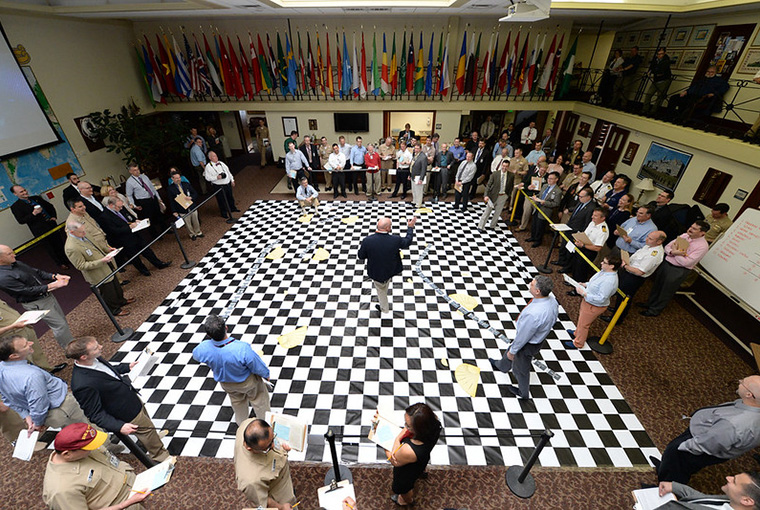Commander, Naval Forces Europe and Commander, Naval Forces North Conduct Wargame at U.S. Naval War College

More than 75 representatives from 12 U.S. Navy and U.S. Marine Corps commands took part in a U.S. Naval War College-hosted war game focused on maritime command and control in the Atlantic in a plausible crisis scenario, May 10-14.
The Trans-Atlantic Maritime Command and Control (TAMC2) War Game 2021 examined alternative command and control structures across the Atlantic to inform the maritime support plans and activities of Commander, Naval Forces Europe and Commander, Naval Forces North.
“Now more than ever, we need to understand where we have operational seams and how to work across them," said Vice Adm. Gene Black, deputy commander, U.S. Naval Forces Europe and commander, U.S. 6th Fleet, who served as the Navy lead during the game. “This war game helped us do just that and more.”
TAMC2 was not a two-sided “red vs. blue” wargame, but a one-sided seminar wargame that explored the responsibilities, authorities and capabilities required to effectively command and control U.S. naval forces in the Atlantic. The game split players into three independent teams, each evaluating critical strengths and weaknesses of their unique trans-Atlantic command and control structure through the lens of seven command and control criteria.
“Since the days Mahan walked the halls of this college, we’ve wholly embraced the idea that the Navy defends far forward,” said Adm. Christopher Grady, commander, U.S. Fleet Forces Command, commander, Naval Forces Northern Command and Naval Forces Strategic Command, who participated in the game. “While this remains true today, the realities of great power competition demand we think about how we command and control naval forces defending far forward, while recognizing that the homeland is no longer a sanctuary and that the oceans are no longer moats but attack vectors.”
The results will be analyzed over the next couple of months and included in a forthcoming game report.
“Our wargaming capabilities here at the Naval War College allow us to explore a range of U.S. naval command and control options in the Atlantic available to decision-makers,” said Rear Adm. Shoshana Chatfield, president of the Naval War College. “When a war game is deliberately designed to create new knowledge and forge deeper professional relationships of warfighters, the Navy and the nation is better served.”
Wargaming is a time-honored tradition at the U.S. Naval War College, going back to the institution’s roots in the late 1880s. The college’s wargaming work is credited with shaping the naval strategy that led the U.S. to victory in the Pacific during World War II. Today’s games explore how naval and joint forces deter and win in this era of great power competition.
